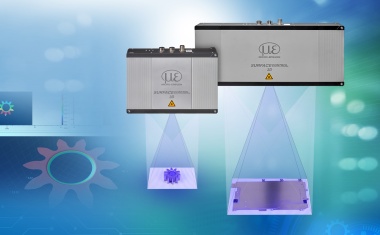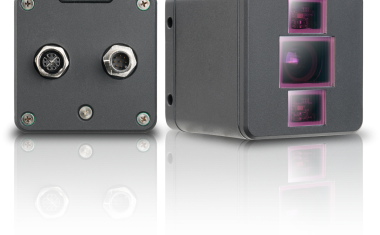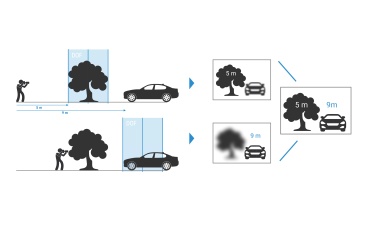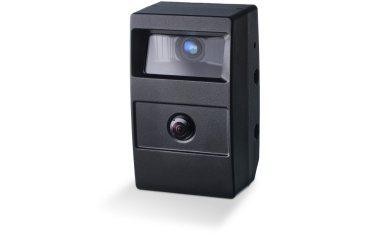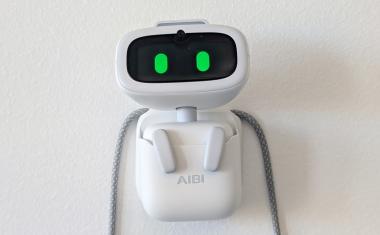Mission to Mars
On August 6, 2012, the Mars Curiosity rover successfully landed on the floor of Gale Crater on Mars. The Curiosity rover is about the size of a small SUV - 3 meters long, not including the arm, 2.7 meters wide, and 2.2 meters tall.
During the 23 months after landing, Curiosity will analyze dozens of samples drilled from rocks or scooped from the ground as it explores with greater range than any previous Mars rover. The Mars Science Laboratory is managed for NASA by the Jet Propulsion Laboratory (JPL), a division of the California Institute of Technology in Pasadena, California. JPL engineered Curiosity to roll over obstacles up to 65 cm high and to travel up to about 200 meters per day on Martian terrain.
To accomplish its mission of determining whether the landing area has ever had, or still offers, environmental conditions favorable to microbial life, the Mars Curiosity rover is tasked with navigating and mapping the rocky Gale crater while avoiding the numerous hazards it will face as it moves across the Martian terrain. Custom-designed CCD (charged couple device) image sensors from Teledyne Dalsa that proved their reliability in the previous Mars Exploration Rover (MER) mission will function as the navigational eyes for the rover.
Hazard Avoidance and Navigation Cameras
To ensure that the rover can see its way successfully across the perilous Martian landscape, JPL engineers outfitted it with sensors that provided successful guidance capabilities on the last MER mission. These CCD sensors are mounted on two different types of engineering cameras: the hazard avoidance cameras, known as "Hazcams," and navigation cameras, dubbed "Navcams." Hazcams and Navcams will work together to provide a complementary and comprehensive view of the terrain.
Eight black-and-white Hazcams are mounted on the lower portion of the front and back of the rover. Each camera has a wide (124 degree x 124 degree) field of view. The cameras must have a wide viewing range on either side because, unlike human eyes, the Hazcams cannot move independently since they are mounted directly to the rover body. The rover will use pairs of images generated by these cameras to map out the shape of the terrain as far as 3 meters in front of it, in a wedge shape that is over 4 meters wide at the farthest distance.
The Hazcams will use visible light to capture three-dimensional (3-D) imagery. This imagery will safeguard against the rover getting lost or inadvertently colliding with objects, and it will work in tandem with software that allows the rover to make its own safety choices and to think on its own. The Hazcams also are used by ground operators to drive the vehicle and to operate the robotic arm.
The navigation camera (45 degree x 45 degree field of view) unit consists of a stereo pair of black-and-white navigation cameras mounted on the mast (Curiosity's neck and head) that will use visible light to gather panoramic, 3-D imagery of the ground near the wheels. Scientists and engineers will make surface navigation plans based on what the images tell them about nearby rocks or other obstacles. The Navcams also are used for on-board obstacle detection.
Proven and Reliable Aerospace Imaging Sensors
Between 1998 and 2003, Dalsa and NASA engineers worked together to design and build several versions of the CCD sensor for the MER project. NASA engineers designed the 1.2 x 2.4 cm 1k frame transfer CCD sensors, which convert light into electrical signals, while DALSA provided fabrication expertise.
The company built on its already existing fabrication process by tailoring it to the current mission, based on NASA's needs. Engineers from both parties then reviewed the design and proposed changes, after which masks were made to build the devices and the wafers fabricated and tested. They were sent to NASA, where the CCD was tested and assembled. Full extended qualification of the devices found no flaws, so the devices were selected to fly to Mars.
NASA incorporated ten of these sensors on each of the two Mars Exploration rovers, Spirit and Opportunity, which launched in 2003. With the sensors' performance and reliability proven on that mission, NASA used this technology again in Curiosity's navigation and hazard-avoidance cameras. The CCDs used on the current project were selected from the batch of sensors that performed so well on the Spirit rover and that continue to guide the Opportunity rover's journey across the Martian surface.
The Phoenix Mission, which was led by the University of Arizona, Tucson on behalf of NASA, also used two MER CCD sensors in its Surface Stereo Imager (SSI) camera. The SSI camera took images of the Martian surface that scientists are using to study the history of water in the Martian arctic, search for evidence of a habitable zone, and assess the biological potential of the ice-soil boundary.
Conclusion
The Curiosity rover has captured the minds of many, and even has its own Twitter and Facebook accounts to share information and photos via social media. Signals from the Curiosity's cameras take about 14 minutes traveling at the speed of light to reach Earth, and then they must be downloaded and processed. Amazingly, these images can be shared very quickly with the public.
Soon after the landing, the Curiosity rover started looking around at its environment and sending images back to Earth. As this mission to Mars continues to search for past or present conditions favorable for life, the imaging components on the rover support the exploration by helping the Curiosity to safely navigate the Red Planet's surface.








